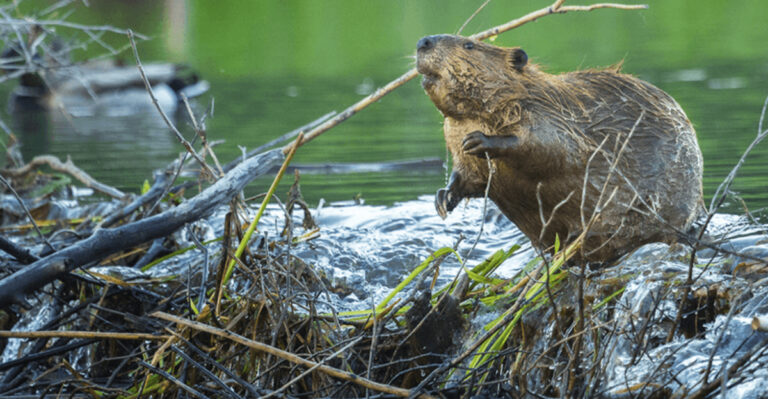Grey Wolf Vs. Spotted Hyena: 15 Facts That Show Which Predator Reigns Supreme

The wilderness plays host to some of nature’s most impressive hunters, with the grey wolf and spotted hyena ranking among the elite.
These formidable predators, though separated by continents, share remarkable similarities in their hunting prowess and social structures. Let’s explore which of these magnificent creatures truly deserves the crown as nature’s ultimate predator.
1. Physical Strength And Size

Adult spotted hyenas outweigh grey wolves by a significant margin. While wolves typically reach 80-85 pounds, hyenas can bulk up to 190 pounds!
The hyena’s neck and shoulders contain incredibly dense muscle, generating a bite force that crushes bone with ease. Their jaws exert over 1,100 pounds of pressure—nearly double that of wolves.
2. Hunting Techniques
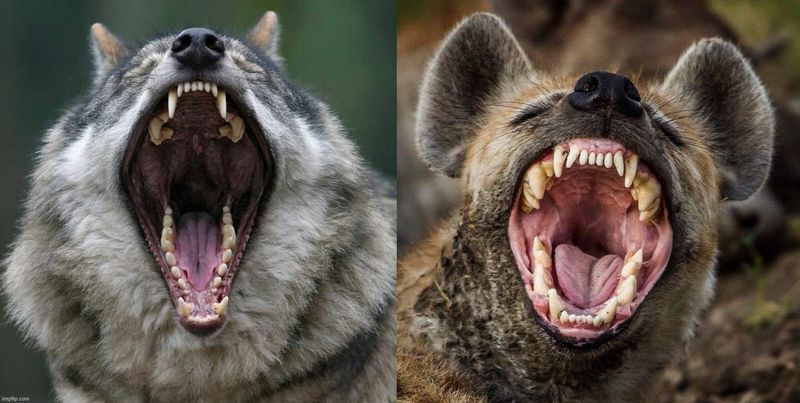
Wolves excel at coordinated pack hunting, employing relay-style chases to exhaust prey over miles. Their tactical approach includes specialized roles—some members flank while others drive prey toward ambushers.
Hyenas blend opportunism with teamwork, often stealing kills but also hunting cooperatively. They’re surprisingly strategic, isolating weak individuals from herds with remarkable precision.
3. Speed And Agility

Grey wolves are marathon runners of the predator world. They maintain speeds of 25 mph for hours, wearing down prey through sheer persistence across vast distances.
Spotted hyenas counter with impressive bursts reaching 40 mph. Their unique shoulder structure allows quick directional changes when chasing gazelles across uneven terrain, giving them an edge in short-distance pursuits.
4. Social Structure
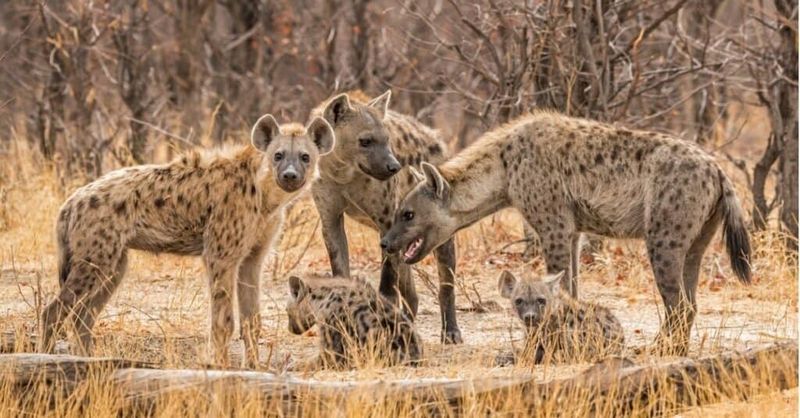
Wolf packs revolve around a breeding pair—the alphas—who lead hunting expeditions and claim first feeding rights. The entire pack participates in raising pups, forming tight-knit family units of 6-10 members.
Hyena clans flip the script with females dominating the hierarchy. These matriarchal societies can number 80+ individuals, with even the lowest-ranking female outranking all males!
5. Communication
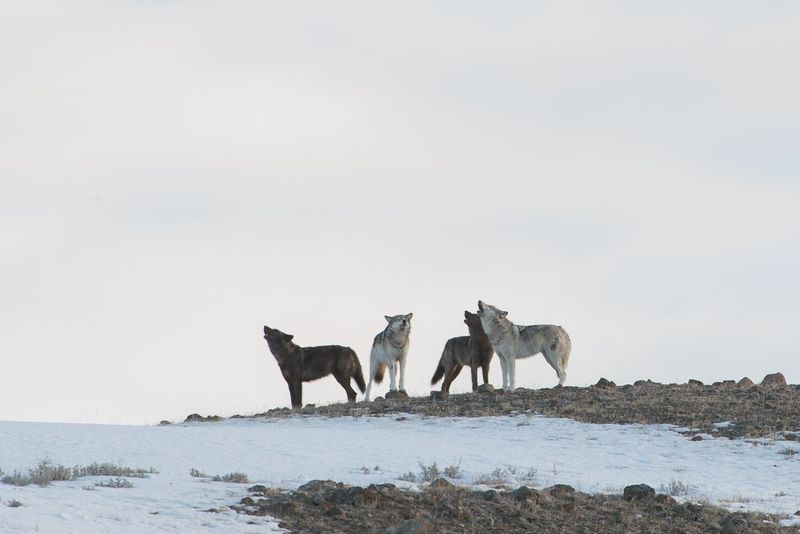
Wolves communicate through a symphony of sound—their iconic howls carry up to 10 miles, helping coordinate pack movements across vast territories. Body language complements their vocal repertoire with tail positions signaling status and intent.
Hyenas boast the most complex vocal range among land mammals. Their infamous “laugh” actually signals anxiety, while whoops, grunts, and growls form a sophisticated language identifying individuals by voice alone.
6. Territory And Range
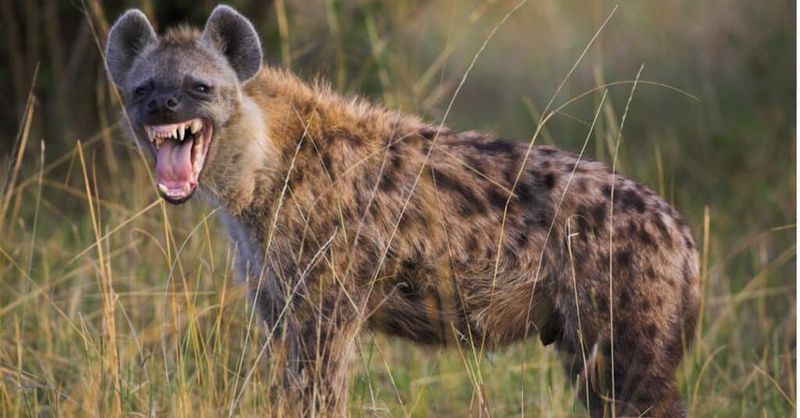
Grey wolves claim massive territories spanning up to 1,000 square miles in northern regions. These boundaries are zealously defended through howling, scent marking, and direct confrontation when necessary.
Hyena clans establish smaller but equally important territories of 25-600 square miles. Their borders feature communal latrines serving as olfactory billboards warning rival clans to keep their distance.
7. Diet And Scavenging Habits
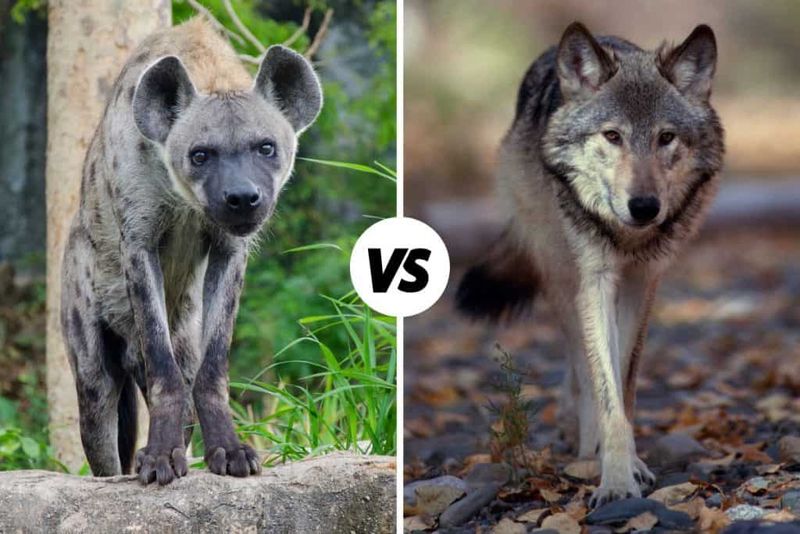
Wolves primarily target fresh kills, focusing on large ungulates like deer, elk, and moose. A pack can devour 20 pounds of meat in a single feeding, leaving little behind.
Contrary to popular belief, hyenas hunt 50-95% of their food. Their digestive system processes nearly everything—including bones, hooves, and teeth—making them nature’s ultimate waste managers while still being formidable hunters.
8. Strength In Numbers
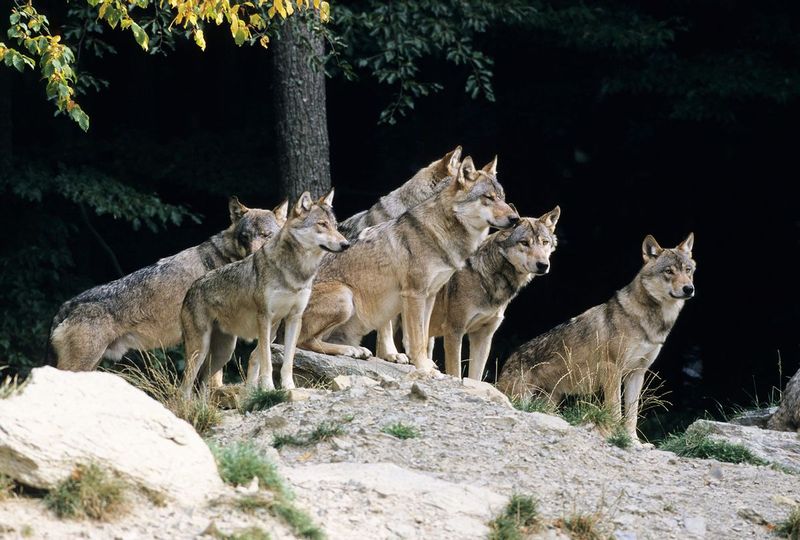
Wolf packs operate like well-oiled military units, using coordinated flanking maneuvers to bring down prey 10 times their individual size. Their success hinges on precision rather than overwhelming force.
Hyenas leverage sheer numerical advantage, with dozens of clan members mobbing lions to reclaim stolen kills. This collective boldness allows them to dominate landscapes where even apex predators must yield.
9. Success Rate In Hunts

Grey wolves average 10-20% success in their hunting attempts, with many chases ending in failure despite their strategic approach. Winter improves their odds as deep snow handicaps prey.
Spotted hyenas achieve an impressive 25-35% success rate—higher than most predators. Their opportunistic nature, combined with remarkable stamina and group coordination, makes them extraordinarily effective hunters year-round.
10. Defense Mechanisms
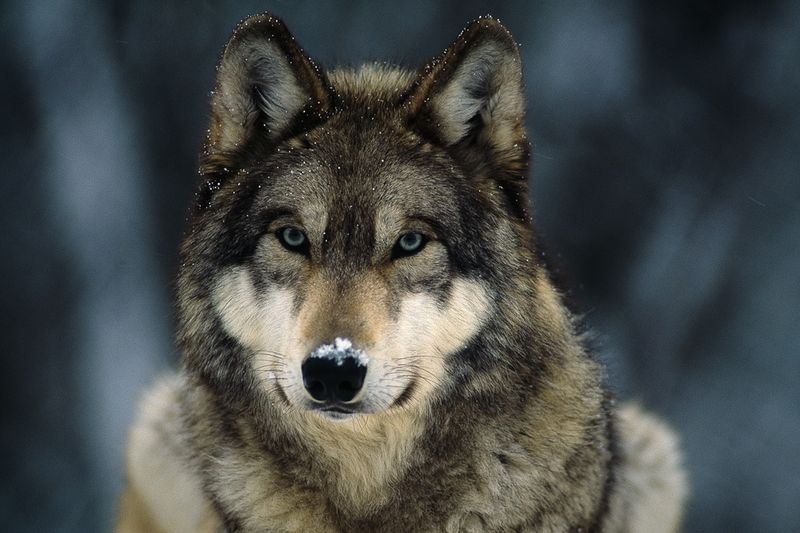
Wolves rely on pack solidarity when threatened, forming protective circles around vulnerable members. Their powerful jaws deliver crushing bites, while agility helps them evade larger predators.
Hyenas possess nearly unbreakable skulls and massive neck muscles that absorb punishment during confrontations. Female hyenas fiercely defend communal dens, with their unusual anatomy making them particularly intimidating opponents even to lions.
11. Reproductive Strategies
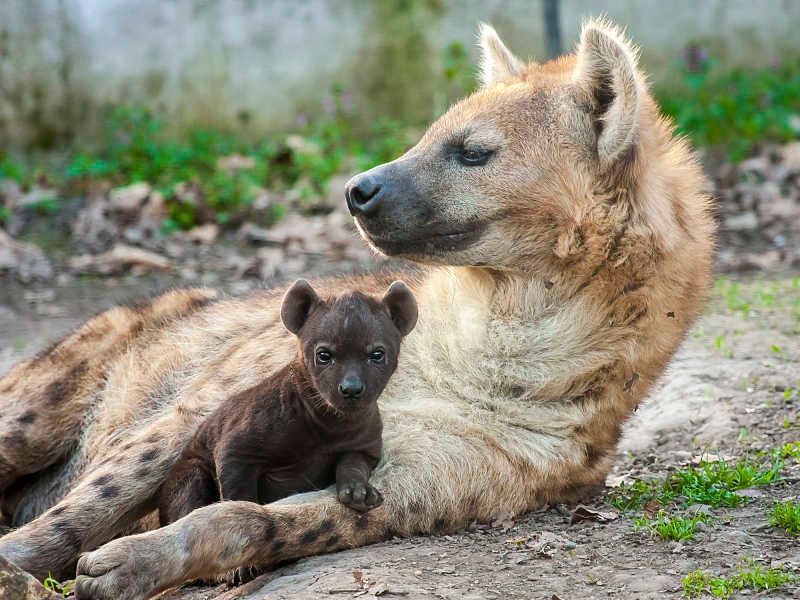
Wolf pairs typically mate for life, producing litters of 4-6 pups annually. The entire pack participates in pup-rearing, regurgitating food for youngsters and taking turns babysitting at den sites.
Female hyenas give birth through their elongated reproductive tract—an excruciating process with 60% of first-time mothers losing their cubs. Remarkably, cubs emerge with open eyes and developed teeth, ready to fight for dominance from day one.
12. Lifespan And Health

Grey wolves typically live 6-8 years in the wild, with some reaching 13 under ideal conditions. Their primary causes of death include territorial conflicts, hunting injuries, and increasingly, human interference.
Spotted hyenas average 12-25 years in the wild—substantially longer than wolves. Their robust immune systems fight off diseases that devastate other predators, while their digestive tract neutralizes deadly pathogens found on rotting carcasses.
13. Interaction With Humans
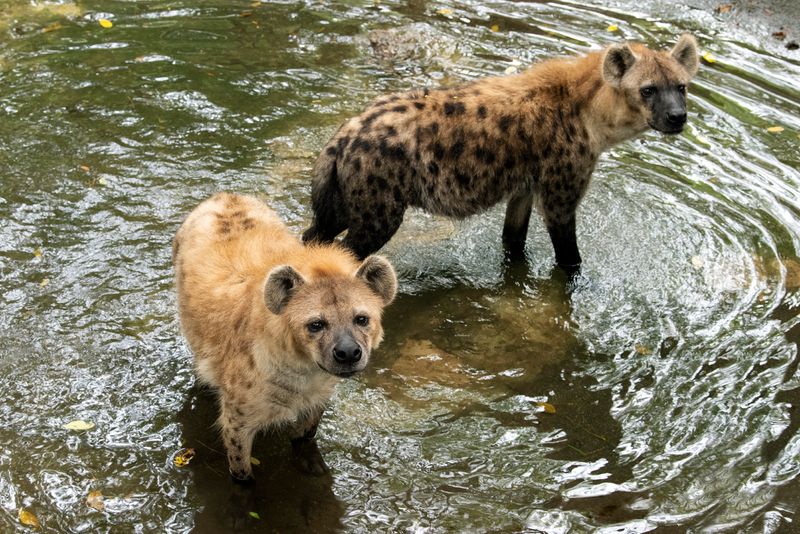
Wolves have experienced a complicated relationship with humans—once exterminated across much of their range before recent conservation efforts. Their recovery represents one of wildlife management’s greatest success stories despite ongoing conflicts with livestock.
Hyenas suffer from one of the worst public relations problems in the animal kingdom. Unfairly portrayed as cowardly scavengers, they face persecution despite their ecological importance as disease controllers and ecosystem engineers.
14. Adaptability To Environments

Wolves demonstrate remarkable adaptability, thriving from Arctic tundra to desert borders. Their thick winter coats shed to lighter summer pelage, allowing thermal regulation across extreme temperature ranges.
Hyenas excel in harsh African environments where water is scarce. Their specialized cooling system prevents overheating during midday hunts when competitors rest, giving them exclusive access to prey during these scorching hours.
15. Historical And Cultural Significance
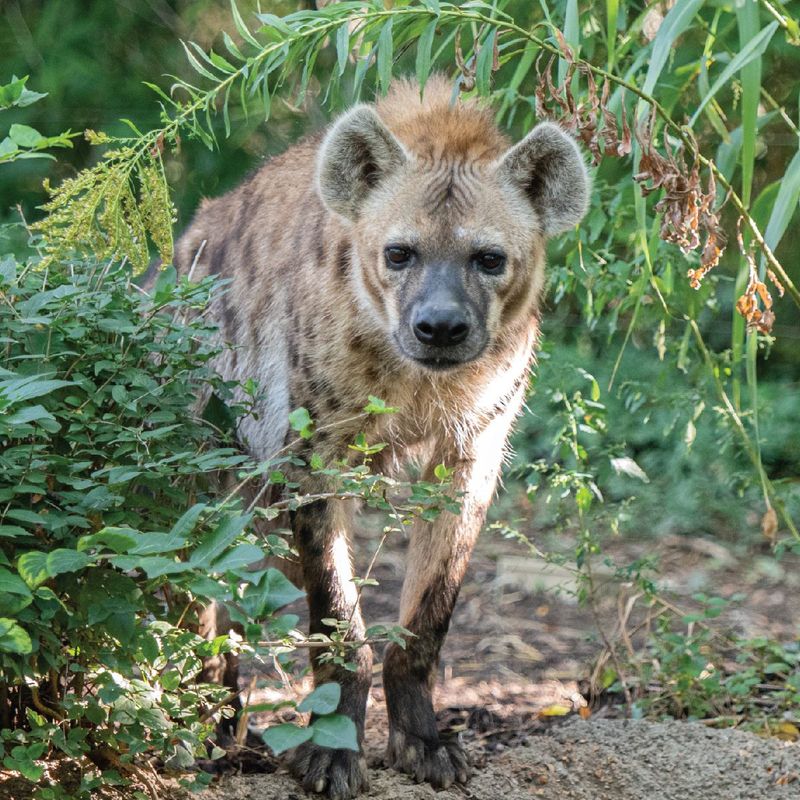
Wolves feature prominently across Northern Hemisphere cultures—from Norse mythology’s Fenrir to Native American creation stories. They symbolize both fearsome wilderness and noble family bonds, inspiring everything from team mascots to conservation movements.
Hyenas appear in African folklore as clever tricksters or malevolent omens. Ancient Egyptians domesticated them, while some East African cultures believe hyena men steal souls at night—contributing to their undeserved villainous reputation.






